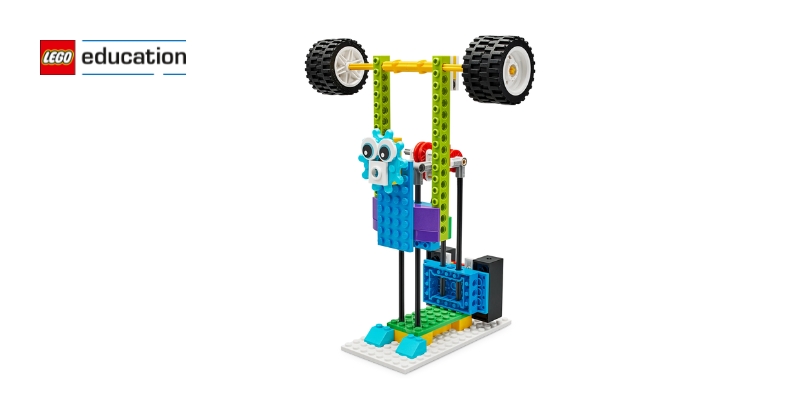Motion is the movement of an object from one place to another. It can occur in many forms, depending on how and where the object moves. Motion surrounds us in everyday life and is especially prominent in sports, where athletes and equipment are constantly in motion.
The LEGO® Education BricQ Motion Essential set brings this concept to life, making it fun and interactive for learners to explore how motion and force work. Before children conduct hands-on experiments to test this concept in action, let us understand the different types of motion.
Types of Motion
Let’s discover some common types of motion and see how they connect to sports.
- Linear Motion: Linear motion happens when an object moves in a straight line. For example, a runner sprinting on a track demonstrates linear motion as they move along a straight path in a single direction. A hockey puck sliding across the ice, demonstrates linear motion as it moves in a straight line until acted upon by an external force.
- Circular Motion: Circular motion happens when an object follows a curved, circular trajectory. Think of a gymnast spinning on a bar, creating graceful loops. Even a cyclist riding around a track exhibits circular motion as they follow a curved path.
- Oscillatory Motion: This type of motion involves repetitive back-and-forth movements. Swinging a cricket bat or a tennis racket involves oscillatory motion, as they move back and forth around a fixed point during a swing.
- Periodic Motion: Periodic motion repeats itself at regular intervals. The ticking of a clock illustrates periodic motion, as its hands move in a consistent pattern at regular intervals. On the other hand, a basketball player’s dribbling the ball, showcases periodic motion, as the ball repeatedly bounces up and down at regular intervals.
- Two-dimensional Motion: Two-dimensional motion occurs when an object moves in two different directions simultaneously, typically along both the x-axis (horizontal) and y-axis (vertical). In football, a quarterback’s pass is an example of two-dimensional motion, as the ball moves both horizontally toward the receiver and vertically through the air, following a parabolic trajectory.
Science of Sports with LEGO® Education BriQ Motion Essential Set
Understanding Circular Motion with ‘Propeller Car’ Activity:
Children build a propeller car with spinning blades and wheels using the BriQ Motion Essential set. They then experiment with how the propeller’s circular motion moves the car in different directions.
The circular motion of the propeller blades is key to understanding how the car moves. When the fan blows air, it causes the propeller to spin in a circular path, transferring energy to the wheels. This circular motion of the propeller helps push the car either upwind or downwind, depending on its orientation. The faster the blades spin, the greater the force transferred to the car, making it move. This demonstrates how circular motion can influence an object’s movement in different directions.
Understanding Two-dimensional Motion with ‘Free Throw’ Activity:
In the Free Throw activity, children build a LEGO model of a basketball hoop and a throwing arm. They then use coding to change the throw distance and basket height to see how the ball moves.
The motion of the basketball is an example of two-dimensional motion because it incorporates both horizontal and vertical movement. The ball travels horizontally as it is thrown towards the basket and vertically as it is influenced by gravity. The combination of these two directions creates a curved trajectory, which students can observe and experiment with by adjusting throw distance and basket height.
Understanding Linear Motion with the ‘Race Car’ Activity:
Students will build a race car model with adjustable wheels and a launcher to experiment with different variables affecting its motion. They will test the car’s movement using various wheel sizes and distances, recording their results.
In this activity, students observe linear motion as the car moves along a straight path. The car’s motion is influenced by forces like friction and thrust, which affect its speed and distance traveled. By adjusting wheel size and launching distance, students see how these changes impact the linear motion, helping them understand how objects move in a straight line.
Learning Through Play with LEGO® Education:
One of the best aspects of the BricQ Motion Essential set is its focus on hands-on learning. Students don’t just read about motion and force—they build, test, and learn by doing. This approach makes concepts more engaging and easier to understand. Each activity is designed to connect STEM concepts with real-world sports examples, engaging students from schools across Dubai in hands-on learning experiences.
Motion and force are at the heart of every sport. Whether it’s a simple pass on a soccer field or a complex gymnastics routine, understanding these concepts is key to mastering movement. By building and experimenting with models, learners can see the science behind sports come alive.

